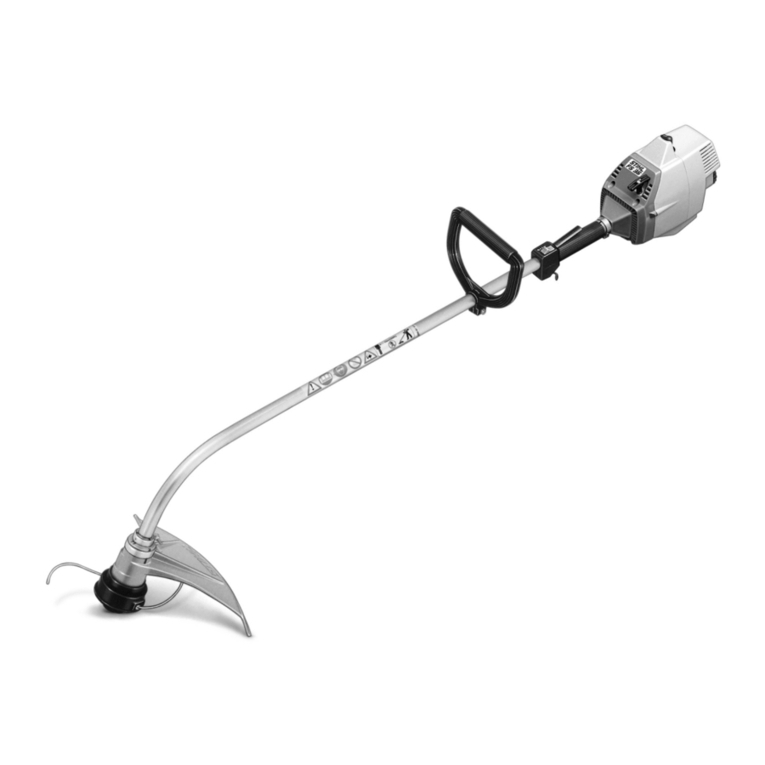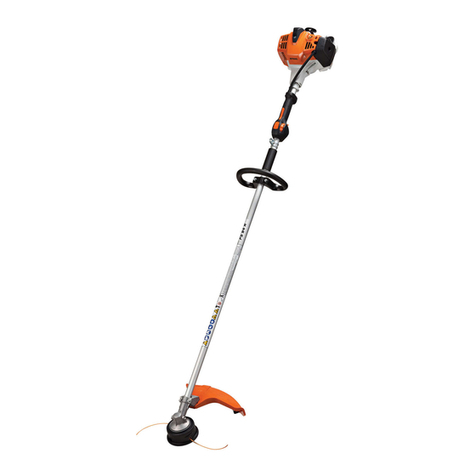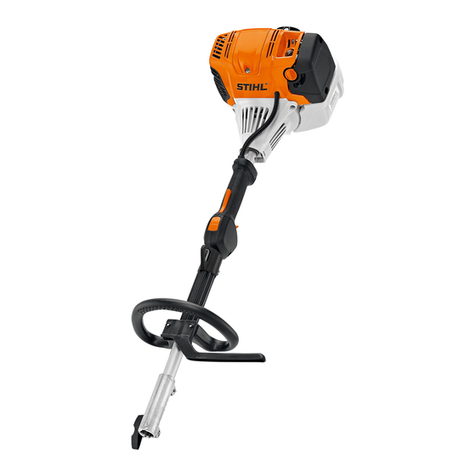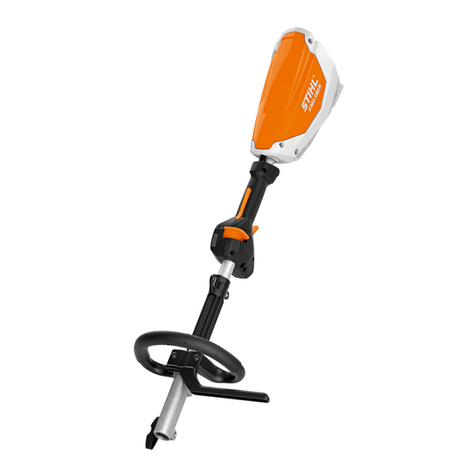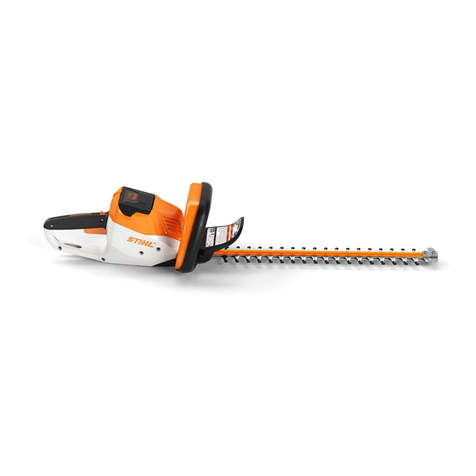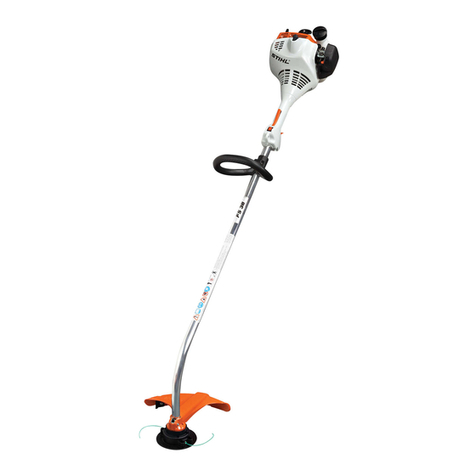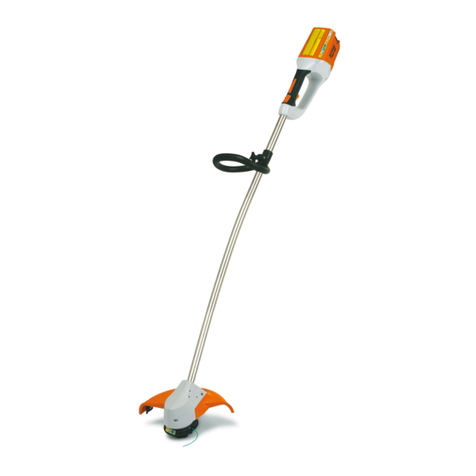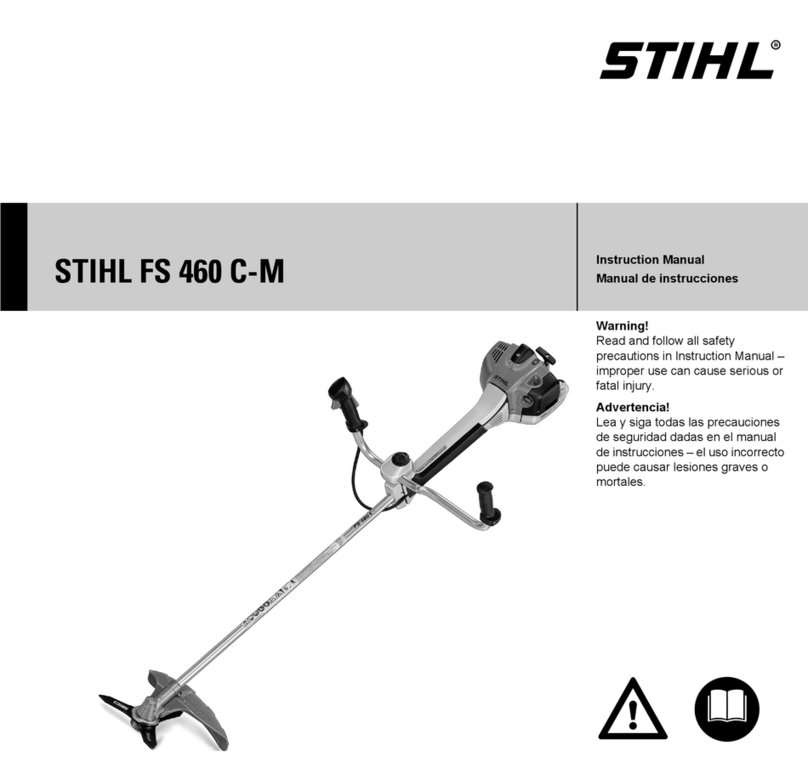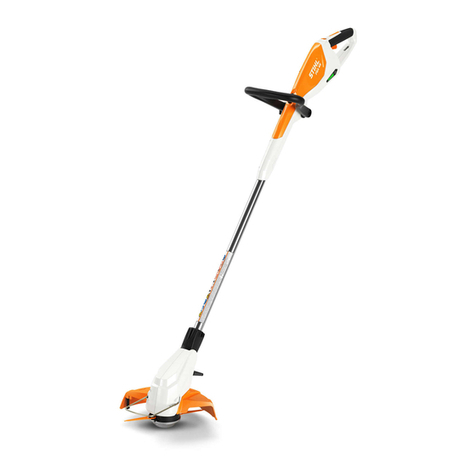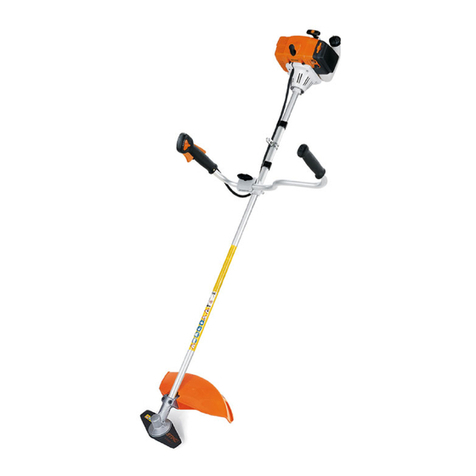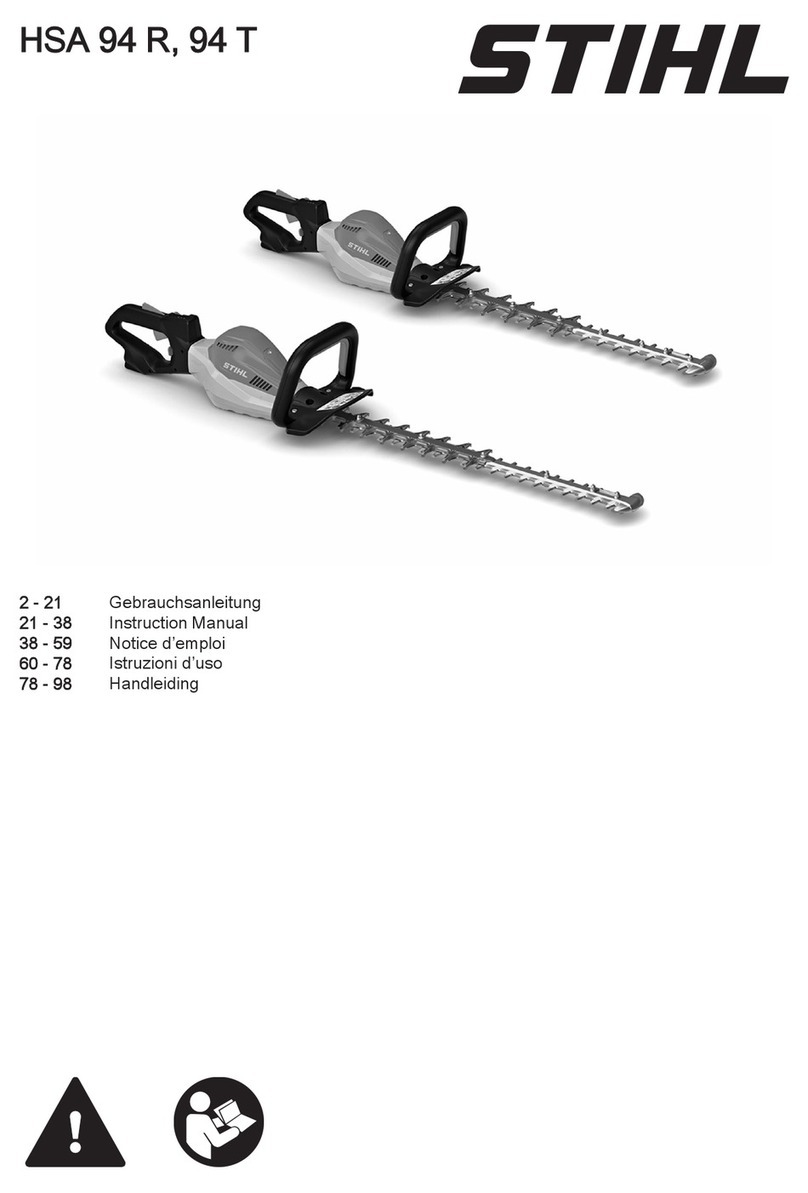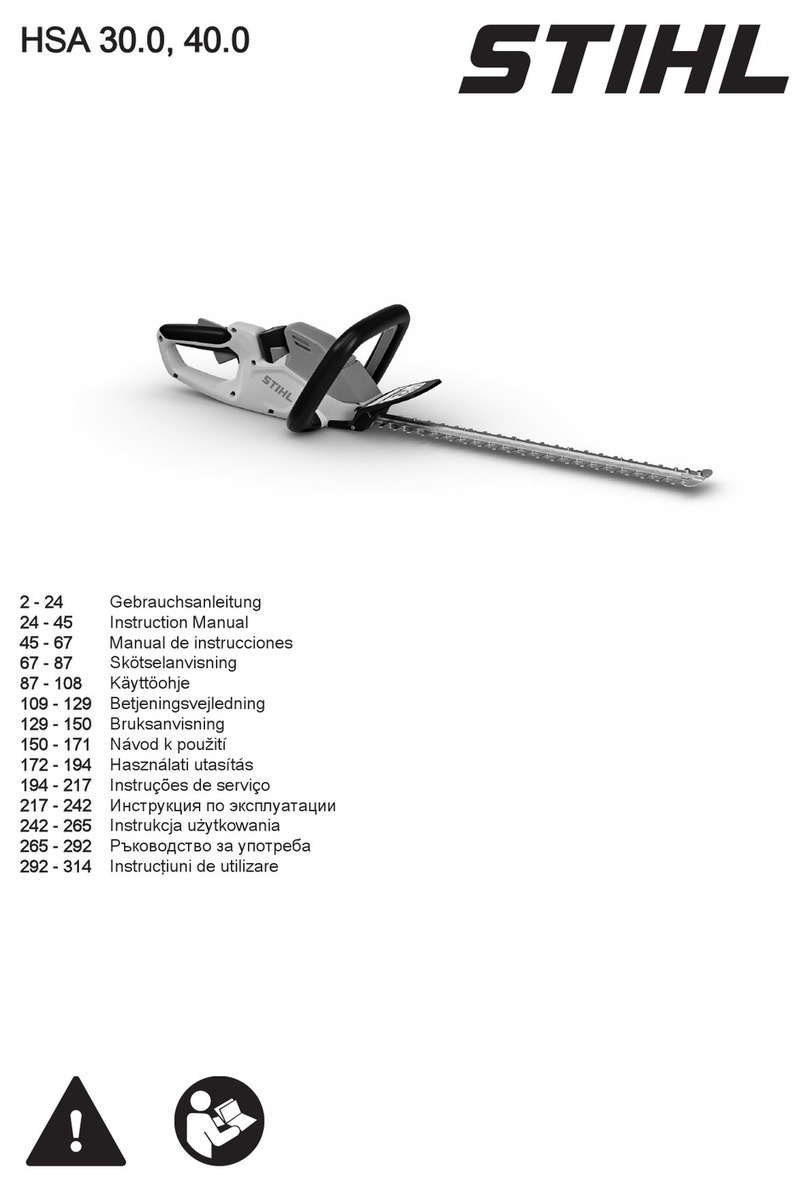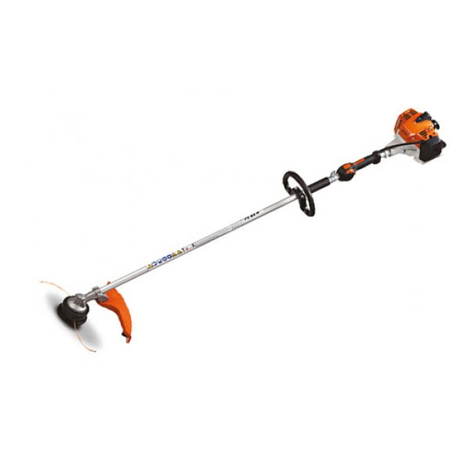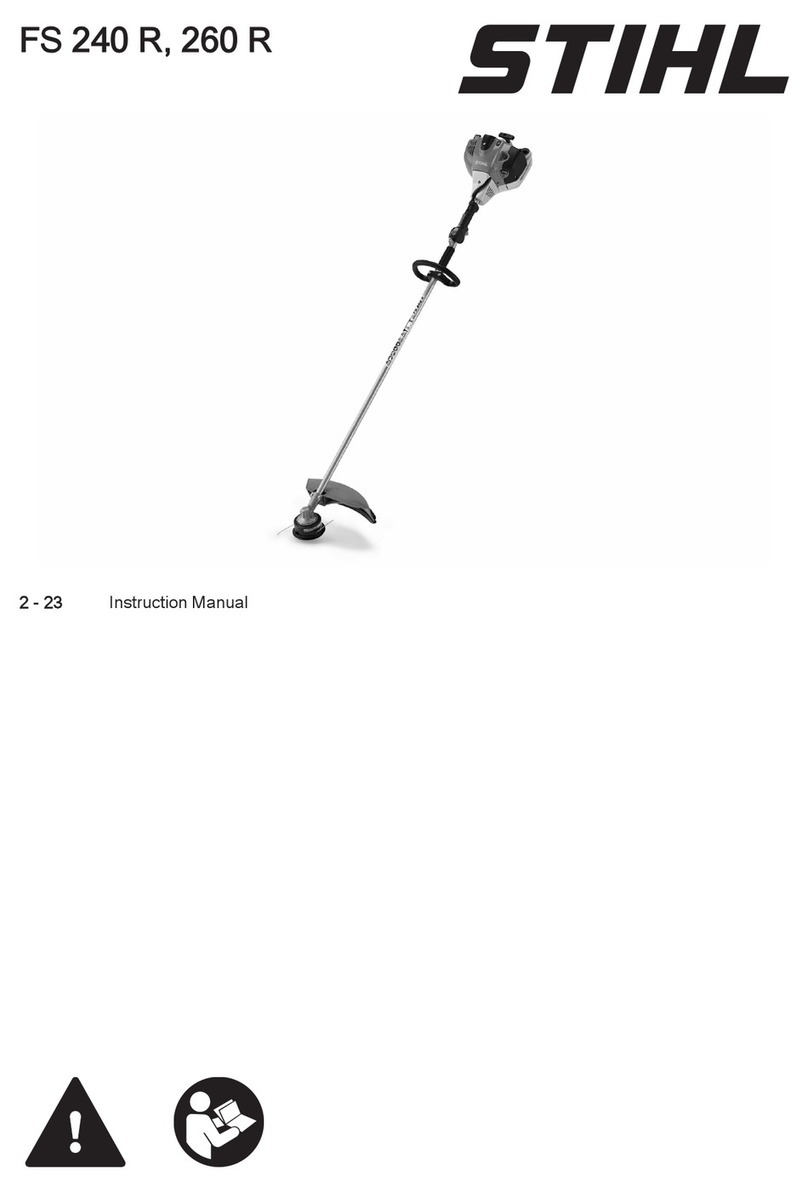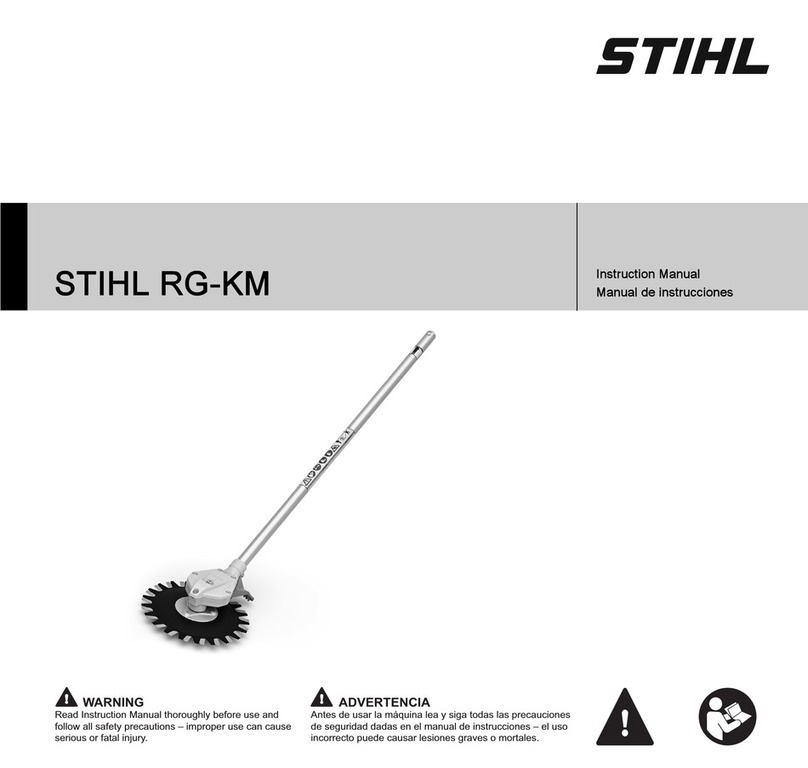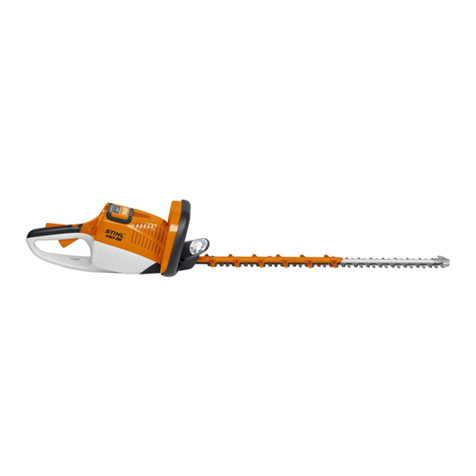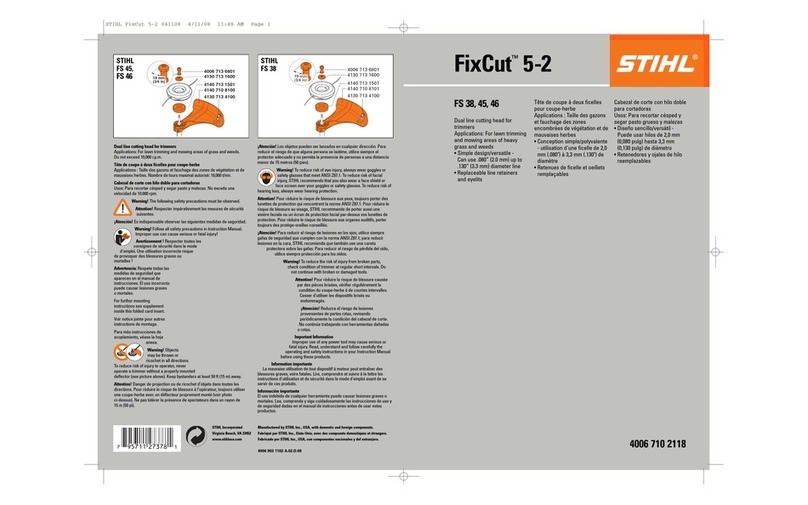
Hedge Trimmer Safety Manual
English
8
WARNING
WARNING
If the vegetation being cut or the
surrounding ground is coated with a
chemical substance (such as an active
pesticide or herbicide), read and follow
the instructions and warnings that
accompanied the substance at issue.
WARNING
Inhalation of certain dusts, especially
organic dusts such as mold or pollen,
can cause susceptible persons to have
an allergic or asthmatic reaction.
Substantial or repeated inhalation of
dust and other airborne contaminants, in
particular those with a smaller particle
size, may cause respiratory or other
illnesses. Control dust at the source
where possible. Use good work
practices, such as operating the unit so
that the wind or operating process
directs any dust raised by the power tool
away from the operator. Follow the
recommendations of EPA / OSHA /
NIOSH and occupational and trade
associations with respect to dust
("particulate matter".) When the
inhalation of dust cannot be
substantially controlled, i.e., kept at or
near the ambient (background) level, the
operator and any bystanders should
wear a respirator approved by NIOSH /
MSHA for the type of dust encountered.
Operating Instructions
WARNING
Do not operate your power tool using the
starting throttle lock, as you do not have
control of the engine speed.
In the event of an emergency, switch off
the engine immediately – move the slide
control / stop switch to 0 or STOP.
WARNING
The cutter blades continue to move for a
short period after the throttle trigger is
released (flywheel effect.)
Accelerating the engine while the blades
are blocked increases the load and will
cause the clutch to slip continuously.
This may result in overheating and
damage to important components (e.g.
clutch, polymer housing components) –
which can then increase the risk of injury
from the blades moving while the engine
is idling.
WARNING
Before you start work, examine the
hedge area for stones, fence wire, metal
or other solid objects which could
damage the cutter blades.
Take particular care when cutting
hedges next to or against wire fences.
Do not touch the wire with the cutting
blades. When working close to the
ground, make sure that no sand, grit or
stones get between the cutter blades.
Striking solid foreign objects such as
stones, fence wire or metal could
damage the cutting attachment and may
cause blades to crack, chip or break.
STIHL does not recommend the use of
your power tool when cutting in areas
where the blades could contact such
objects.
WARNING
Observe the cutting blades at all times –
do not cut any areas of the hedge that
you cannot see. When cutting the top of
a taller hedge, check the other side of
the hedge frequently for bystanders,
animals and obstructions.
DANGER
As soon as the engine is
running, this product gen-
erates toxic exhaust
fumes containing chemi-
cals, such as unburned
hydrocarbons (including
benzene) and carbon
monoxide, that are
known to cause respira-
tory problems, cancer,
birth defects, or other
reproductive harm. Some
of the gases (e.g. carbon
monoxide) may be color-
less and odorless. To
reduce the risk of serious
or fatal injury / illness
from inhaling toxic fumes,
never run the machine
indoors or in poorly venti-
lated locations
Your power tool is not
insulated against electric
shock. To reduce the risk
of electrocution, never
operate this power tool in
the vicinity of any wires or
cables (power, etc.)
which may be carrying
electric current.
